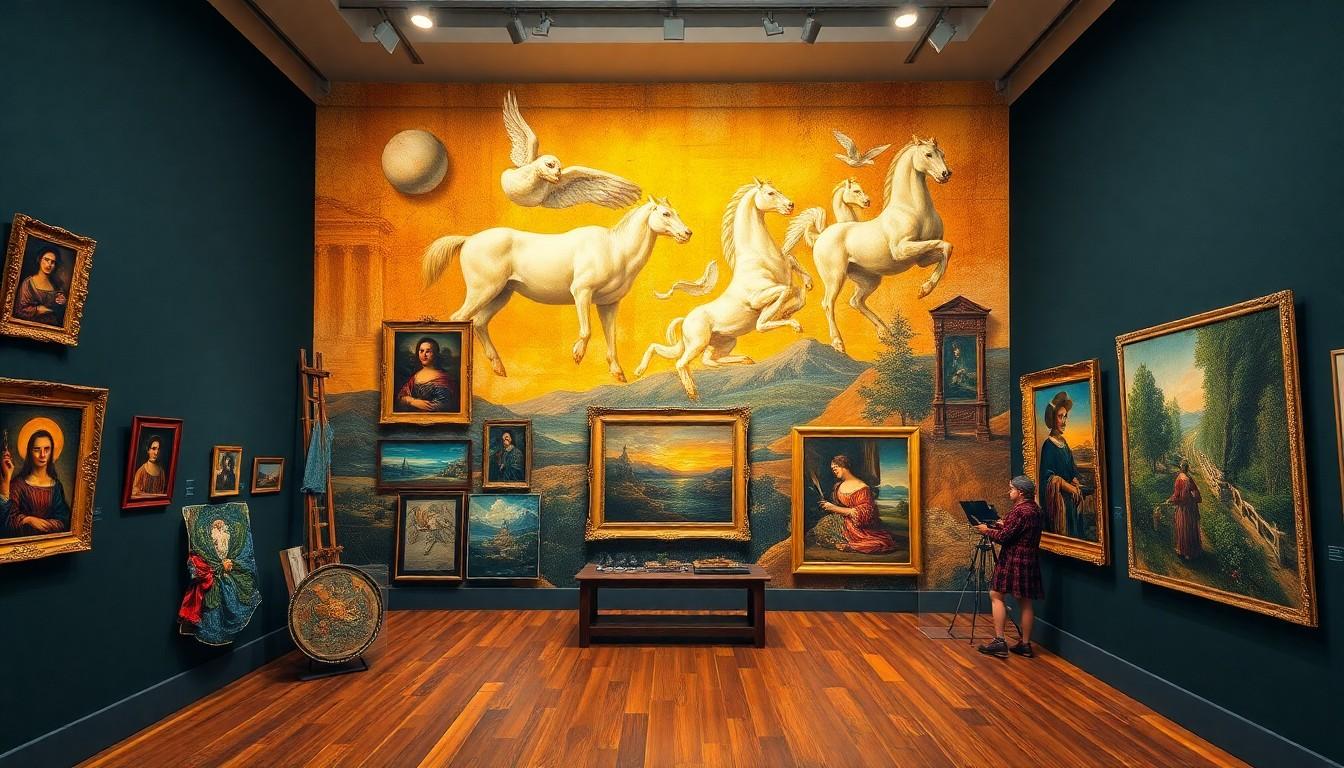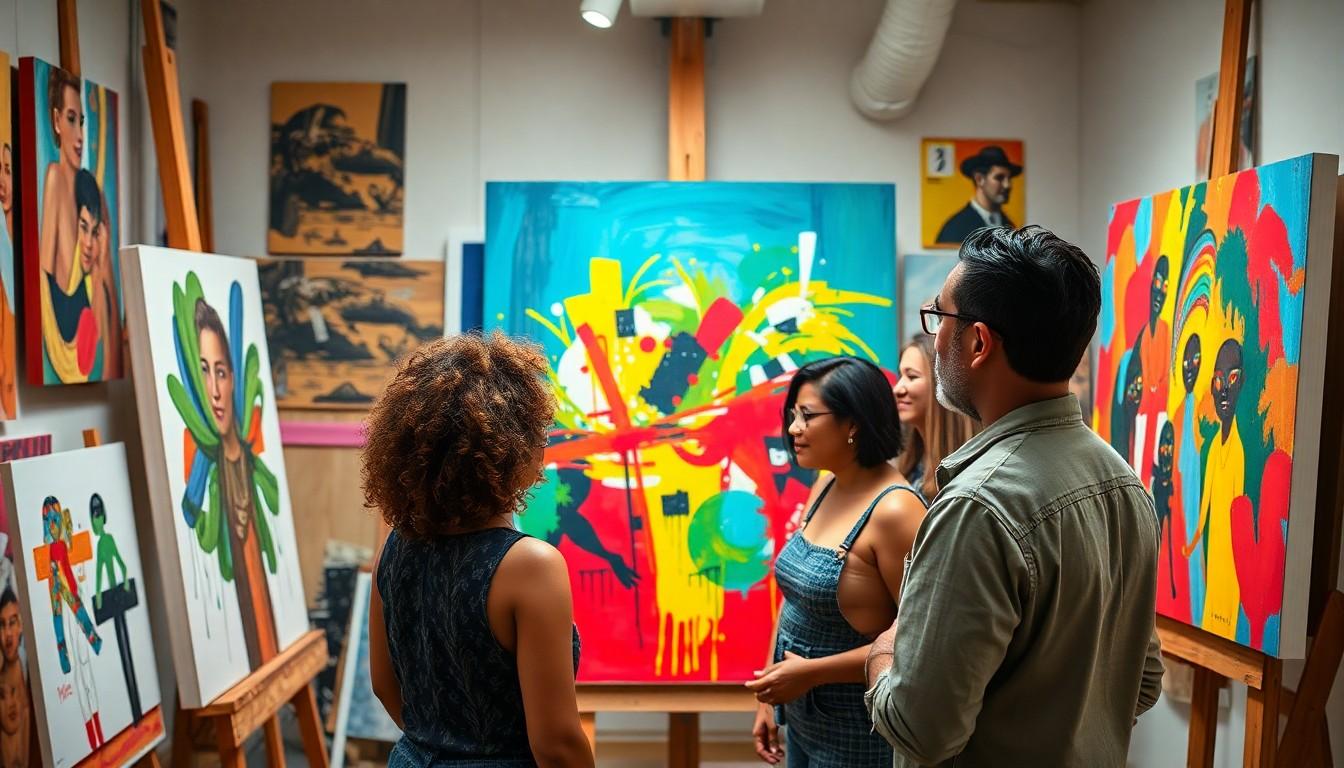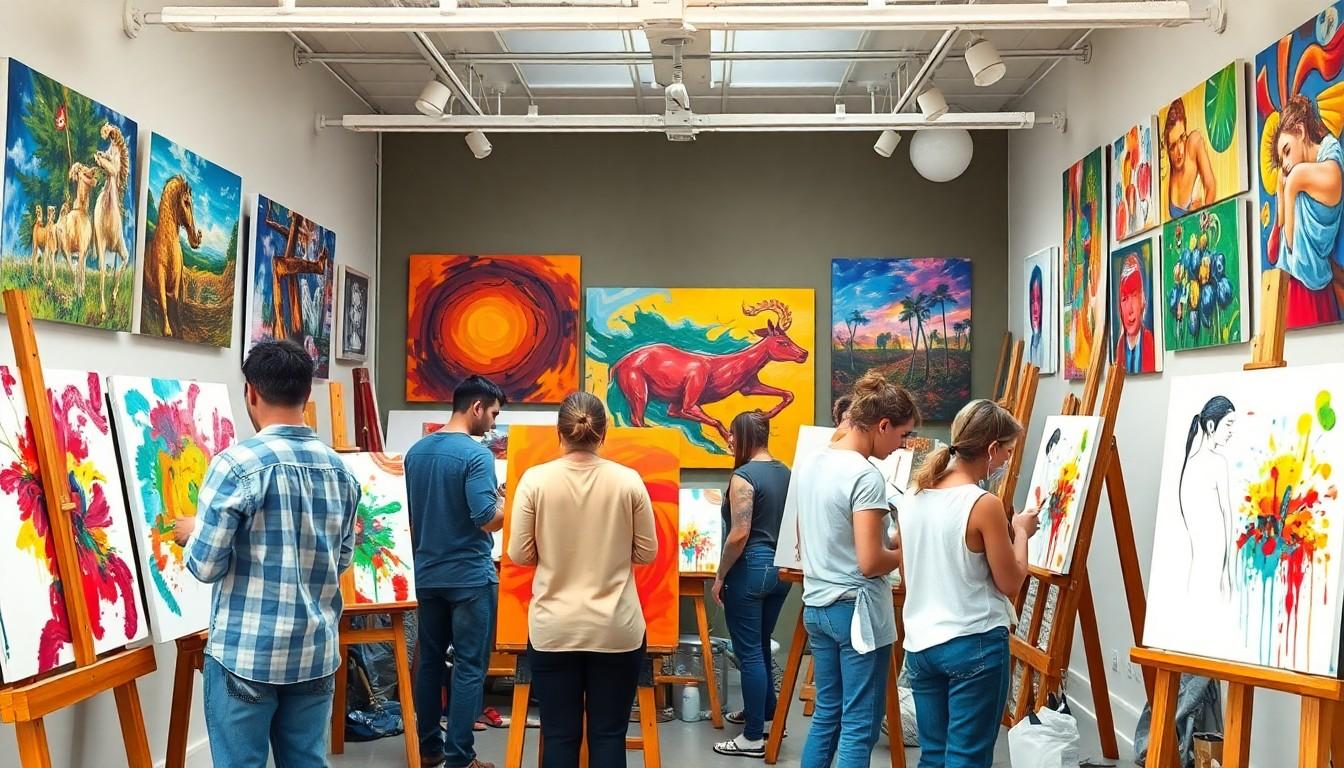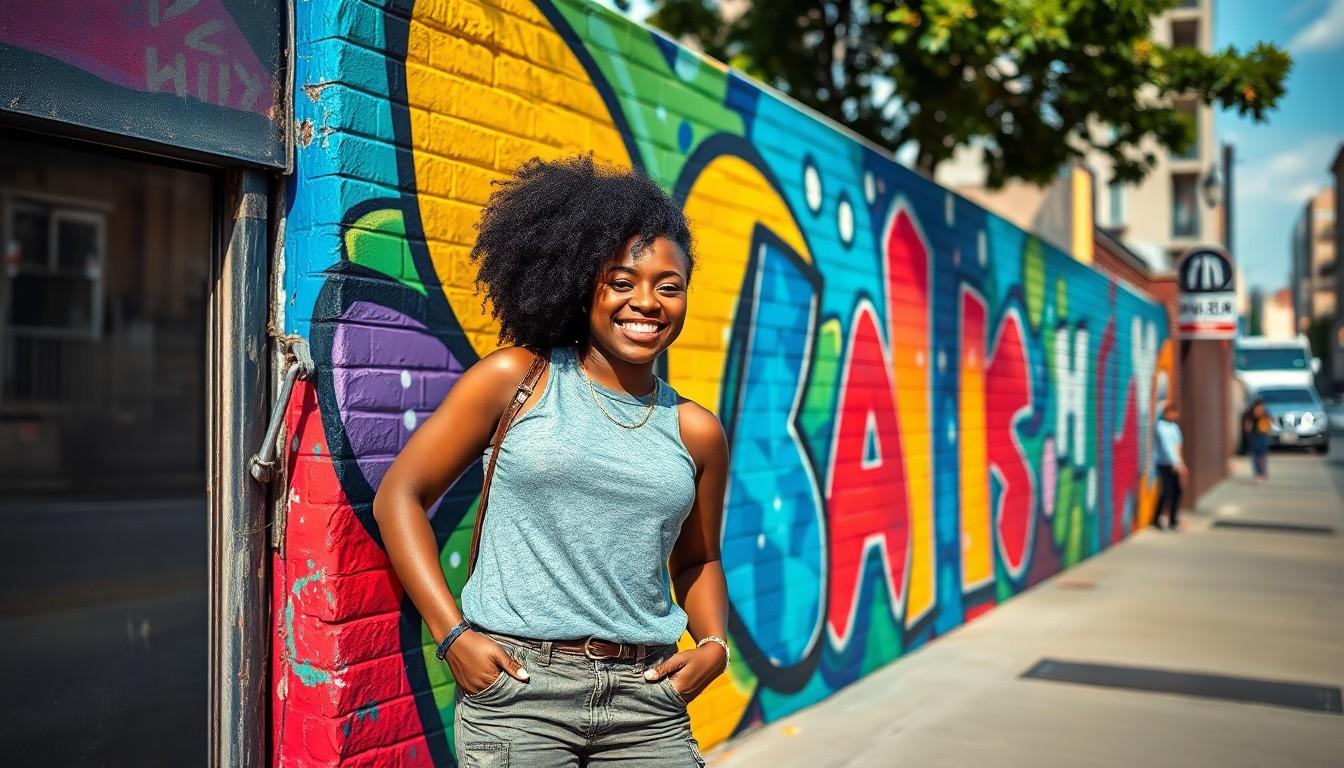Art is like a buffet for the eyes, and there’s something for everyone. From the bold strokes of Abstract Expressionism to the delicate details of Impressionism, popular art styles offer a feast of creativity that can tickle anyone’s fancy. Whether you’re an art aficionado or someone who just enjoys a good Instagram scroll, understanding these styles can elevate your appreciation and maybe even your next dinner party conversation.
Popular Art Styles
Art encompasses numerous popular styles, each offering unique characteristics and expressive qualities. Abstract Expressionism emphasizes spontaneous creation and emotional intensity, often using bold colors and sweeping brushstrokes. Impressionism captures fleeting moments and the effects of light, typically featuring softer colors and loose brushwork.
Realism focuses on depicting subjects as they appear in everyday life, prioritizing accurate detail and representation. Surrealism delves into the subconscious, blending dream-like imagery with bizarre juxtapositions to evoke thought and intrigue.
Pop Art challenges traditional boundaries by incorporating commercial culture and media imagery, celebrating everyday objects with vibrant color and bold lines. Cubism breaks down subjects into geometric shapes, presenting multiple viewpoints within a single canvas, transforming perception through complexity.
Minimalism strips art to its essentials, utilizing simplicity and reduction in form and color, prompting viewers to reflect on the essence of artistic expression. Each style provides a distinct perspective, enriching the art landscape and inviting exploration. Recognizing these styles deepens appreciation, whether enjoyed in a gallery, a private collection, or during social discussions. Understanding their historical context amplifies enjoyment and fuels engaging conversations at events like dinner parties.
Historical Context
Understanding the historical framework broadens appreciation for various art styles. Each movement reflects the beliefs and aesthetics of its time.
The Evolution Of Art Movements
Art movements progress through distinct phases, each influencing the next. From Renaissance precision to Abstract Expressionism’s emotional outpouring, the timeline of art showcases humanity’s evolving creativity. Impressionism emerged in the late 19th century, prioritizing light and color over form. Subsequent movements, such as Surrealism and Pop Art, challenged norms, inviting audiences to question reality. Elements of Minimalism later stripped art down to essentials, urging viewers to contemplate meaning in simplicity. This evolution intertwines with historical events, highlighting how art responds to social and political changes.
Influence Of Culture And Society
Culture and society play crucial roles in shaping art styles. The context of an era influences artists’ perspectives and their expression methods. For example, the post-World War II landscape fostered Abstract Expressionism, reflecting emotional turmoil and existential dread. In contrast, the rise of consumerism in the 1960s saw the emergence of Pop Art, which embraced commercial imagery and popular culture. Societal values, technological advancements, and historical events continuously interweave, contributing to the rich tapestry of artistic expression. As viewers delve into these narratives, they uncover deeper meanings behind familiar styles.
Contemporary Popular Art Styles

Contemporary art styles reflect the dynamic nature of modern creativity. Popular movements capture the essence of various cultural expressions, inviting audiences to explore their unique attributes.
Abstract Expressionism
Abstract Expressionism emerged in the mid-20th century, characterized by spontaneous and emotive brushwork. Artists aimed to convey deep feelings and emotional states, often using bold colors and large canvases. Jackson Pollock’s drip paintings exemplify this style, emphasizing action and movement. The movement challenged traditional techniques, allowing artists to embrace individuality and freedom. Notably, the emphasis on personal expression made Abstract Expressionism a significant chapter in art history.
Pop Art
Pop Art surfaced in the 1950s, merging fine art with popular culture. This movement showcased everyday subjects, such as advertisements and comic strips, transforming them into artistic statements. Artists like Andy Warhol and Roy Lichtenstein exemplified this style by using commercial techniques like screen printing and bold colors. Through its accessible imagery, Pop Art questioned the distinctions between high and low culture. Its vibrant and familiar aesthetic resonated with audiences, making art more relatable.
Street Art
Street Art has gained popularity as a form of public expression. Often found in urban environments, it encompasses various styles, including graffiti and muralism. Artists utilize public spaces to convey social and political messages, often engaging the community in dialogue. Banksy, a renowned street artist, exemplifies this movement through his thought-provoking and often controversial pieces. The ephemeral nature of street art challenges conventional notions of permanence, making it a vital component of contemporary culture.
Characteristics Of Popular Art Styles

Popular art styles exhibit distinct qualities that resonate with diverse audiences. Understanding these characteristics provides insight into what makes each style unique.
Color Usage
Color plays a pivotal role in defining various art styles. Abstract Expressionism often employs bold and vibrant colors to evoke emotions. Impressionism uses soft, pastel hues to capture the effects of light and atmosphere. Natural colors dominate Realism, emphasizing authenticity in everyday scenes. Surrealism blends unexpected colors to create dreamlike effects. In Pop Art, bright and engaging colors draw inspiration from commercial advertising. Minimalism prefers limited palettes, focusing on monochromatic schemes to convey simplicity. Each style’s approach to color enhances its thematic expression and emotional impact.
Techniques And Mediums
Techniques and mediums further distinguish popular art styles. Abstract Expressionism embraces spontaneous brushwork and unconventional methods, allowing artists to express inner feelings. Impressionism favors quick, loose brush strokes that capture fleeting moments. Realism employs meticulous detail, often using traditional oil paints to depict life accurately. Surrealism experiments with collage and mixed media to juxtapose reality and dream. Pop Art integrates techniques like screen printing, contributing to its accessibility. Minimalism utilizes basic materials, often emphasizing a connection to space and form. Each style’s choice of technique and medium influences its overall aesthetic and viewer experience.
World of Creativity and Expression
Exploring popular art styles opens up a world of creativity and expression. Each style offers unique insights into the human experience and reflects the cultural context of its time. Whether it’s the emotional depth of Abstract Expressionism or the vibrant commentary of Pop Art, these movements invite viewers to engage and interpret.
Understanding these diverse styles not only enriches appreciation for art but also enhances conversations in various social settings. As individuals delve into the characteristics and techniques that define each movement, they discover the profound impact art has on society. This journey through popular art styles encourages a deeper connection to creativity and the narratives that shape our world.

 Popular art styles exhibit distinct qualities that resonate with diverse audiences. Understanding these characteristics provides insight into what makes each style unique.
Popular art styles exhibit distinct qualities that resonate with diverse audiences. Understanding these characteristics provides insight into what makes each style unique.


